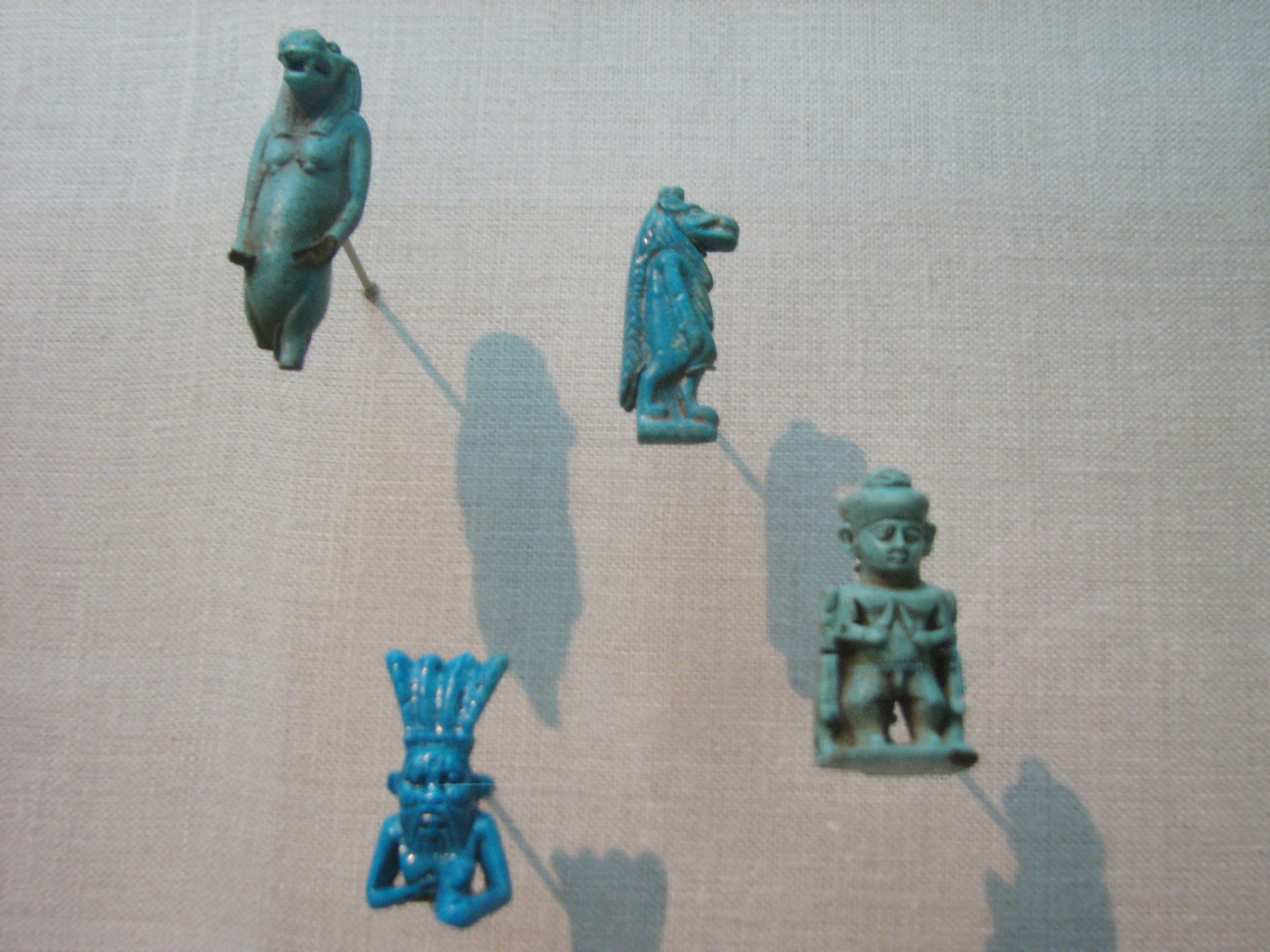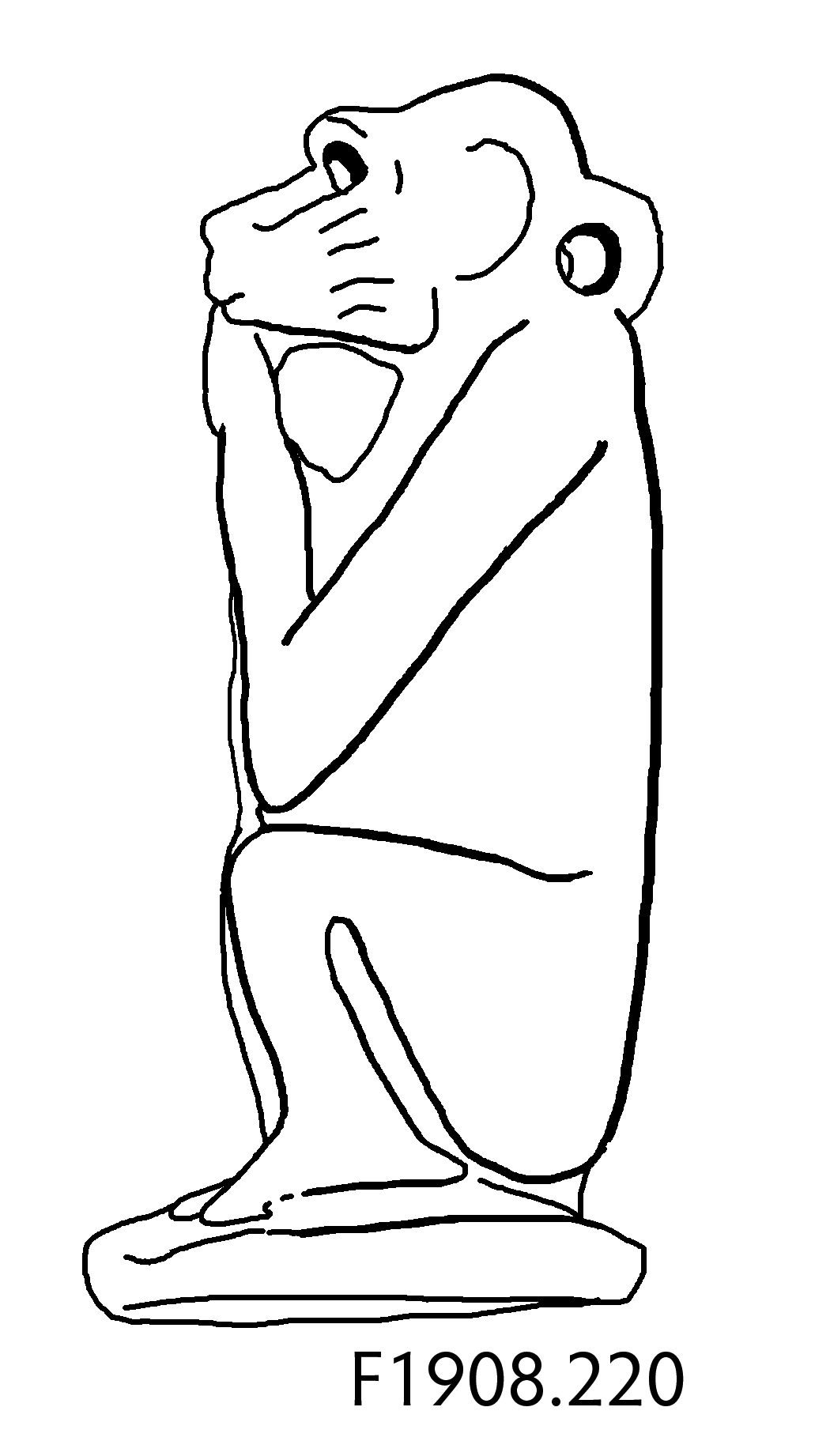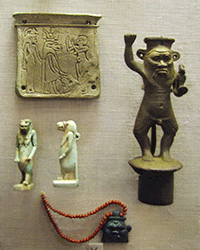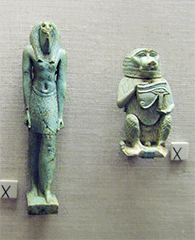
Third Intermediate Period, ca. 1075-656 B.C.E.
Faience (glazed composition), H: 6.0 W: 2.0 D: 2.4 cm
Gift of Charles Lang Freer, F1907.21
Lower Left: Amulet of Bes
Third Intermediate Period or later, ca. 1075-656 B.C.E or later
Faience (glazed composition), H: 4.1 W: 2.2 D: 1.9 cm
Gift of Charles Lang Freer, F1907.386
Upper Right: Amulet of Taweret (aka Thoureis)
Possibly Ptolemaic Dynasty, 305-30 B.C.E.
Clay, H: 4.4 W: 1.9 D: 0.6 cm
Gift of Charles Lang Freer, F1908.222
Lower Right: Amulet of dwarf god accompanied by Isis, Nephthys, and Nefertum
Third Intermediate Period, ca. 1075-656 B.C.E.
Faience (glazed composition), H: 4.4 W: 2.2 D: 1.6 cm
Gift of Charles Lang Freer, F1908.87






